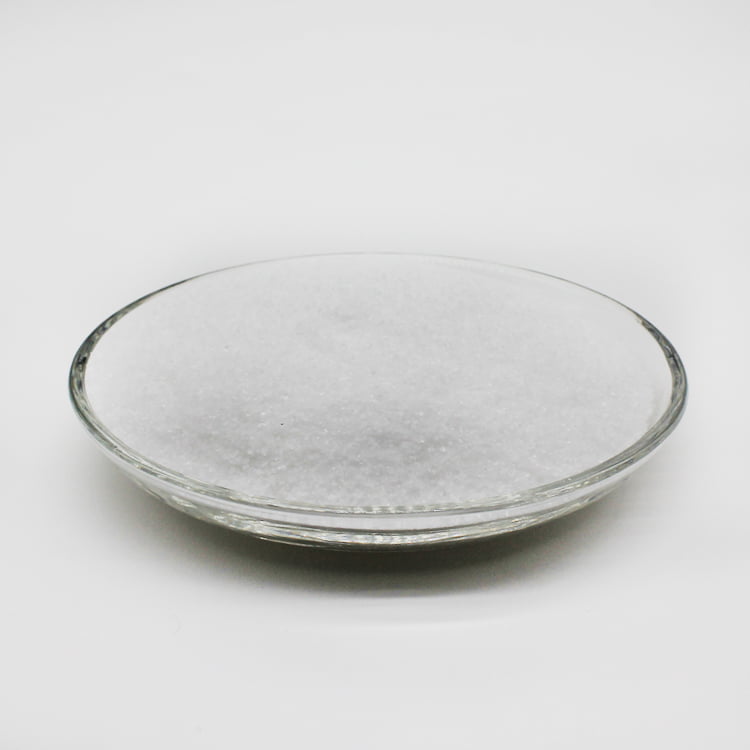Nonionic Polyacrylamide NPAM
Nonionic polyacrylamide (NPAM) is a water-soluble polymer or polyelectrolyte. Because its molecular chain contains a certain number of polar groups, it can absorb solid particles suspended in water to bridge between particles or agglomerate particles to form large flocs through charge neutralization. Therefore, it can accelerate the settling of particles in the suspension, and has a very obvious effect of accelerating solution clarification and promoting filtration. It is mainly used for flocculation and sedimentation of various industrial wastewater, and sedimentation and clarification treatment. Such as papermaking and pulp wastewater treatment, wastewater treatment in mineral processing and metal smelting process, wastewater treatment in steel mills and stone processing plants, etc.
Physical properties of Nonionic polyacrylamide NPAM
The physical properties of nonionic polyacrylamide NPAM are mainly determined by its behavior in aqueous solution. Since the molecular chain contains amide groups or ionic genes, its notable feature is high hydrophilicity and can be dissolved in water in various proportions. The electrolyte has good tolerance, such as ammonium chloride, sodium sulfate, etc. are not sensitive, and it is also compatible with surfactants.
How to use nonionic polyacrylamide NPAM
When in use, it should be made into an aqueous solution with a concentration of 0.1%. It is advisable to use neutral water without salt impurities.
When dissolving, evenly sprinkle nonionic polyacrylamide NPAM into the stirring water, and control the stirring speed at 100~300rpm. Appropriate heating (< 60°C) can accelerate the dissolution.
Adjust the pH value of the liquid to be treated so that the nonionic polyacrylamide NPAM can fully play its role (select the optimal pH value and the amount of nonionic polyacrylamide NPAM through experiments.)
When adding the nonionic polyacrylamide NPAM solution, the mixing with the liquid to be treated should be accelerated. After the flocs appear, the stirring speed should be slowed down to facilitate the growth of the flocs and accelerate the settlement.
Principle of action of nonionic polyacrylamide
1) The principle of flocculation: when NPAM is used for flocculation, it is related to the surface properties of the flocculated species, especially the kinetic potential, viscosity, turbidity and pH value of the suspension. The dynamic potential of the particle surface is the reason for particle inhibition. NPAM with opposite surface charges can reduce the kinetic potential and aggregate.
2) Adsorption and bridging: NPAM molecular chains are fixed on the surfaces of different particles, and polymer bridges are formed between the particles, so that the particles form aggregates and settle.
3) Surface adsorption: various adsorptions of polar group particles on NPAM molecules.
4) Reinforcing effect: NPAM molecular chains and dispersed phase implicate the dispersed phase together through various mechanical, physical and chemical effects to form a network.
Scope of application of nonionic polyacrylamide
1. Used in textile, printing and dyeing industries. Polyacrylamide is used as a sizing agent for fabric treatment, as a finishing agent, and as a protective layer that can create softness, anti-wrinkle, and anti-mold. Utilizing its strong hygroscopicity, it can reduce the break rate when spinning spun yarn. Polyacrylamide as a post-treatment agent can prevent static electricity and flame retardancy of the fabric. When used as printing and dyeing auxiliaries, polyacrylamide can make the product have high adhesion fastness and high brightness, and it can also be used as a non-silicon polymer stabilizer for bleaching.
2. Mainly used as flocculant. For suspended particles, coarse, high concentration, positively charged particles, and neutral or alkaline sewage water pH value, since the anionic polyacrylamide molecular chain contains a certain amount of polar groups that can absorb solid particles suspended in water, so that Bridging between particles forms large flocs. Therefore, it accelerates the settling of particles in the suspension, and has a very obvious effect of accelerating the clarification of the solution and promoting filtration. This product is widely used in the treatment of chemical industrial wastewater and waste liquid, and municipal sewage treatment. Tap water industry, high turbidity water purification, sedimentation, coal washing, mineral processing, metallurgy, iron and steel industry, zinc, aluminum processing industry, electronics industry and other water treatment.
3. Used in petroleum industry. Oil recovery, drilling mud, waste mud treatment, prevention of water channeling, reduction of friction, enhanced recovery, and tertiary oil recovery are widely used.
4. Used in paper industry. One is to improve the retention rate of fillers and pigments. In order to reduce the loss of raw materials and environmental pollution; the second is to increase the strength of paper (including dry strength and wet strength). In addition, the use of PAM can also improve the tear resistance and porosity of paper to improve visual and printing performance. In food and tea wrapping paper.
5. Other industries. In the food industry, it is used for cane juice clarification and syrup phosphorus floatation extraction in the production of cane sugar and beet sugar. Enzyme fermentation liquid flocculation and clarification industry, also used for the recovery of feed protein, stable quality, good performance, the recovered protein powder has no adverse effects on the survival rate of chickens, weight gain, egg production, synthetic resin coatings, civil engineering grouting materials plugging Water, building materials industry, improvement of cement quality, construction industry adhesives, joint repair and water blocking agent, soil improvement, electroplating industry, printing and dyeing industry, etc.
Introduction to other types of polyacrylamide
Anionic polyacrylamide APAM
Cationic polyacrylamide CPAM




